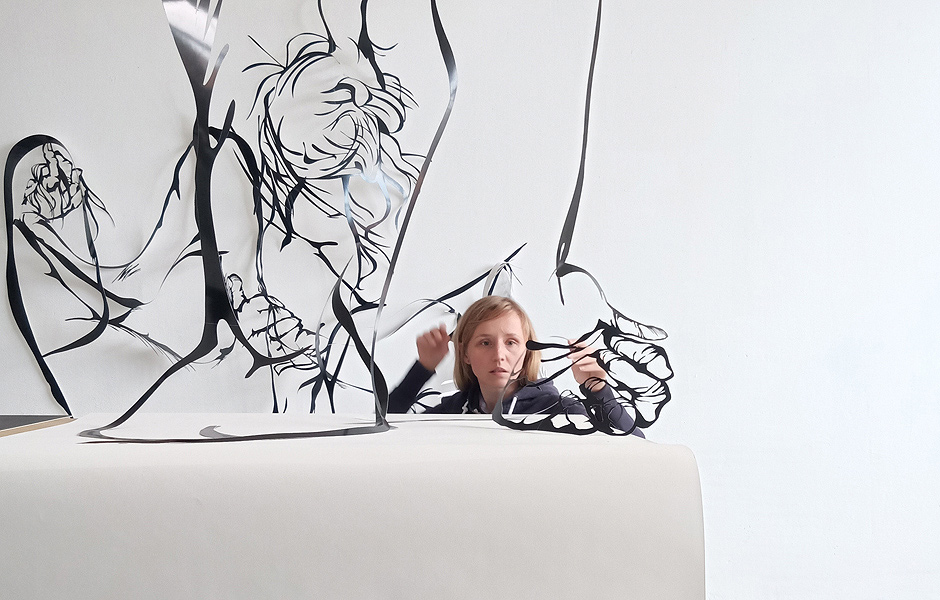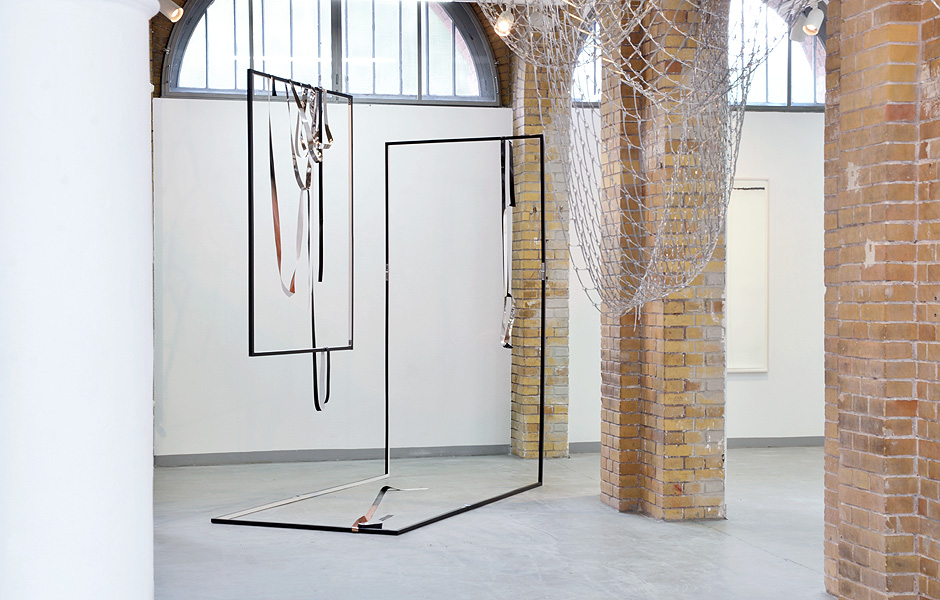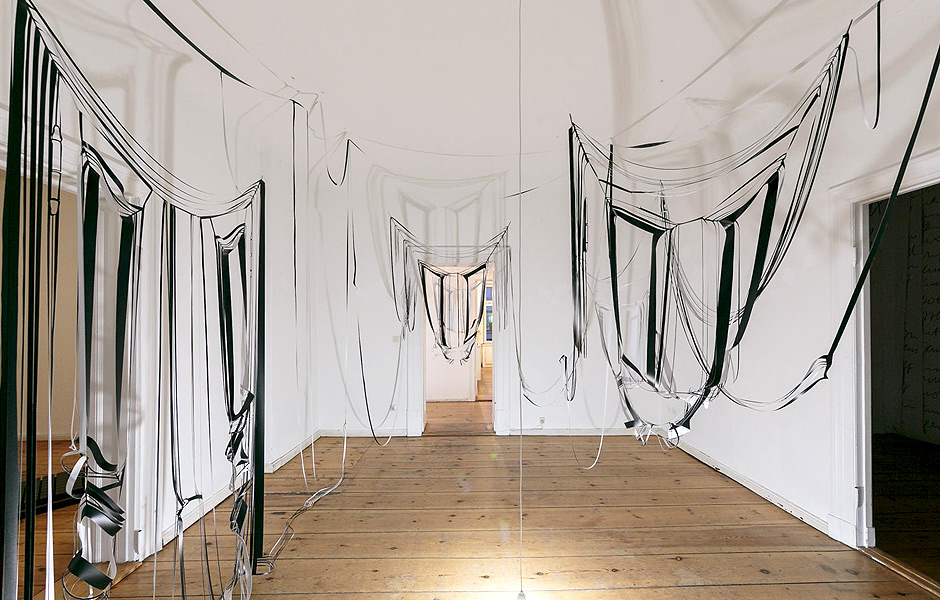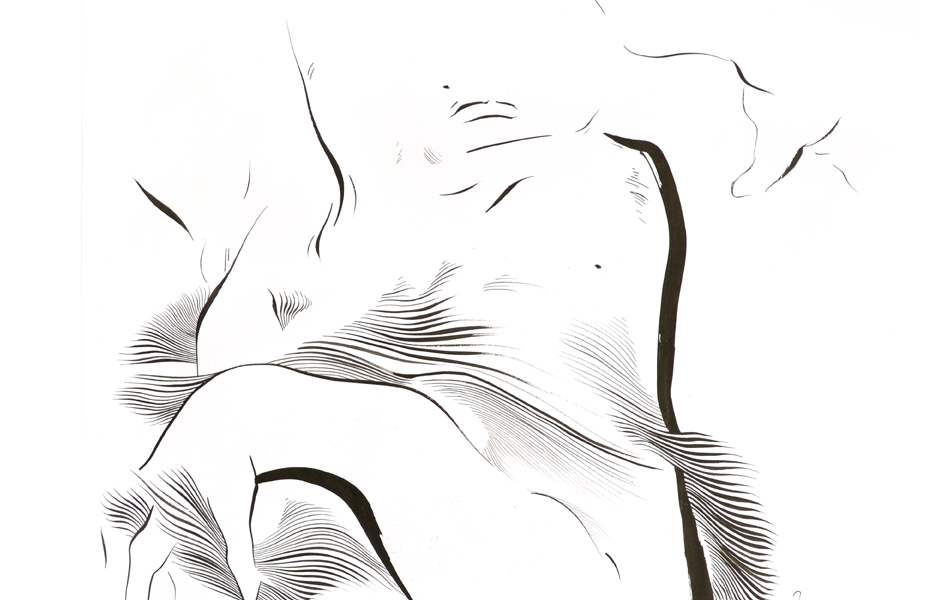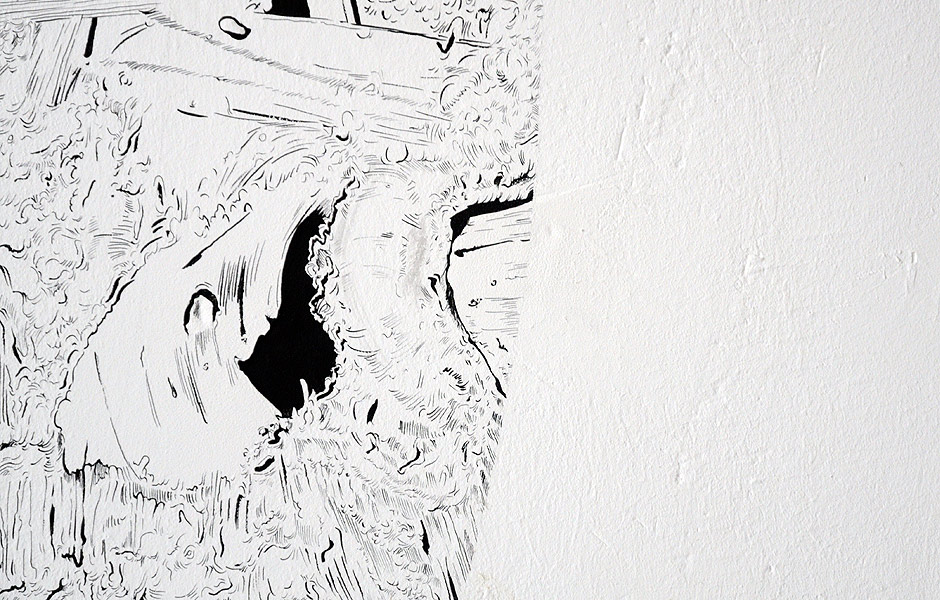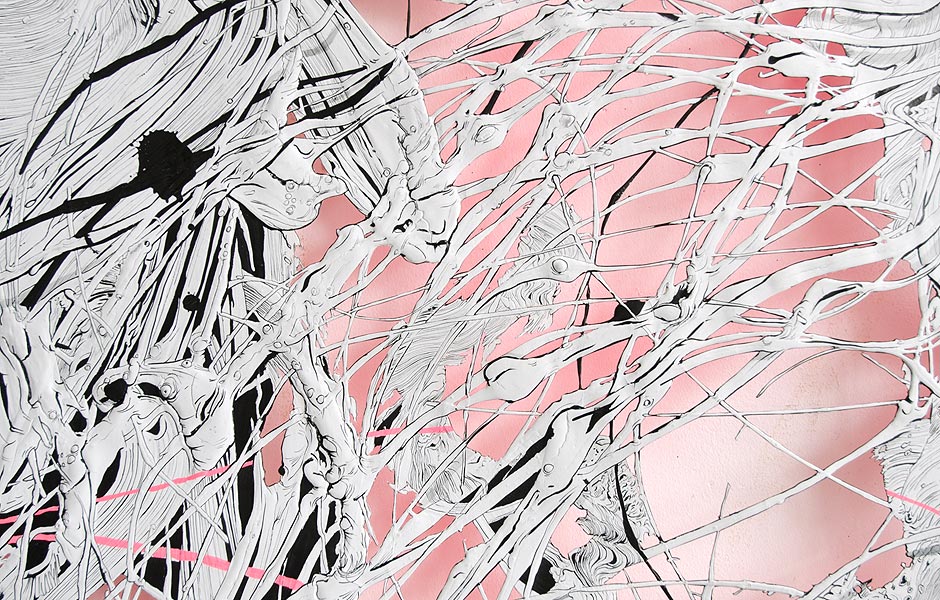Master Class OUT OF LINE: Drawing with and beyond the Self by Dagmara Genda
General Course Description
“Challenging the notion of self-expression and exploring ways to think beyond the self is the goal of “Out of Line,” a 5-day intensive master class in experimental drawing held at the BERLIN ART INSTITUTE (June 08 – 12, 2026). In addition to daily lectures introducing a wide range of contemporary and historical art practices that utilize drawing as both medium and method, participants will engage in a variety of exercises intended to explore different forms of marking-making. These exercises will include reactive drawing, collaborative drawing, spatial drawing, drawing with the body, drawing with prosthetics, and more. Materials that participants will use in the process are, but are not limited to, brush and ink, thread, wire, tape, graphite, charcoal, photography and collage. Instead of being a means of getting in touch with the self, this course explores drawing as a means of questioning creativity and the boundaries of the self.” (Text & photos by courtesy of Dagmara Genda)
Learning Outcomes
- Participants will employ methods of drawing that include and move beyond work on paper.
- A broad knowledge of contemporary and historical drawing practices will be gained.
- Group discussions will help participants develop the vocabulary to think and talk about what they do.
- Participants will learn techniques through which to break out of ingrained habits and develop new directions in their work.
General Guidelines
The 5-Day Master Class is designed for anyone wishing to break free from their own learned conventions of drawings or for those interested in exploring the notion of drawing as such. It is accessible for beginners and advanced artists alike and requires no prior knowledge. The goal of the course is to explore different processes of mark-making that expand the idea of what drawing can be. After one week, participants will have the necessary material and conceptual tools to develop and complete self-directed drawing projects. The class will be conducted in English.
Benefits
- Meet like-minded artists from all over the world
- Get exposure to a wide variety of art in an international cultural capital
- Learn through an intensive hands-on approach
Methods and Topics of Teaching
- Methods of drawing with which we will experiment are spatial drawing, drawing words, collaborative drawing, drawing with prosthetics, drawing under constraint, and more…
- Participants will experiment with different types of materials including brush and ink, various collage techniques, thread, wire and tape, graphite, charcoal, and coloured pencils.
- Daily lectures are designed to expand the idea of drawing and present examples of artists’ practices..
- Group discussions will invigorate debate and encourage participation
- International participants from a variety of backgrounds will also have the opportunity to learn from each other and build lasting connections.
Program Structure with Daily Course Description
Day 1
9:30 AM Reception at the BAI
Drawing as Reaction
Drawing is frequently described as more immediate and spontaneous than other image-making techniques, because anyone can do it with minimal means. It is also something that almost every child does, and as such, it is often linked to authenticity. And yet even the most spontaneous gesture, and perhaps especially the most spontaneous gesture, betrays the force of habit, muscle memory, as well as recurring motifs present in our environment and culture. A drawing is a series of learned codes and symbols that start with how to hold a pencil and where one is permitted to leave a mark. So how can we start break with these codes, most of which are internalised and taken for granted?
On the first day of the course participants will look beyond themselves and make drawings as if they were seismographs. That is, they will react to their environment and each other so as to leave their comfort zones and produce new marks.
The morning will start with an artist talk, in which Dagmara Genda will introduce her work and approach to drawing. Then the participants will introduce themselves and talk about their experience with drawing. Before lunch, Dagmara will present a short lecture entitled “Reactive Drawing” so as to introduce methods artist have used to make marks in response to and in relation to their environments.
The afternoon will start with two slightly different exercises in reactive drawing followed by the lecture “Drawing Sound,” which will present drawings that are, in some way, caused by sound. Then the participants will listen to a composition and develop its “score” through drawing.
Day 2
Drawing and the Body
Each drawing is a trace of the body. Like handwriting, it is evidence of the speed and weight of the hand. During the second day of the course, participants will explore what happens when they draw under certain types of constraint. What happens when you frustrate or limit the movements you can make with your body either through literal constraints or other factors like particular rules, or time?
The day starts with the lecture “Constraining the Self”: an introduction to various artists who make drawings according to a series of rules or limitations. Afterwards participants will develop a constraint under which to make a drawing and produce a series of works. The morning ends with a quick discussion about the results of the exercise.
After lunch Dagmara will present “The Self as Drawing,” in which artists are introduced who use their body in a graphic or mark-making way. These “drawings” are actually performances and photographs. After the lecture, participants will use their own bodies or the bodies of their colleagues, to make drawings. The primary medium will be photography. A good phone camera will be enough. At the end of the day the photos will be presented in a slideshow and discussed. These photos will be then printed and used for the next day’s assignment.
Day 3
Drawing Beyond the Body
If each drawing is a trace of the body, can we move beyond the body? To some extent we already do that. Every medium is an extension of the body that has its own vocabulary. A pencil will require a different set of skills than a calligraphy brush, for example. In this class, participants will move away from the body even more drastically by building prosthetics that extend our range of movement.
With the lecture “Extending the Self: Prosthetics and Drawing Machines,” Dagmara will present various practices of drawing outside and beyond the body. This will include prosthetics as well as non-human artists, like drawing machines. Afterwards everyone will build a prosthetic, which could be a very simple device, and create a drawing with it.
The afternoon lecture is titled “Drawing with Found Material” and delves into collage as a form of drawing. Participants will then make their own collages out of the photographs they took the day before and the reactive drawings from the first day.
Day 4
Drawing and Writing
Is handwriting a form of drawing? Could drawing be seen as a type of notation? On the fourth day of the master class, we will explore the overlaps between image and text.
The morning lecture, “Drawing Words,” introduces artists who use words as form. Strategies of presentation such as size, font, colour, and place will be discussed. Examples will range from art history to concrete poetry. Afterwards participants will experiment with drawing words themselves. This will be followed by a discussion about how the words were drawn.
In the afternoon Dagmara will present “Writing as Drawing.” Here artists will be presented who have used tropes and forms of writing as a graphic device. In this lecture, artists do not necessarily draw words, as much as make drawings with text. Afterwards participants will engage in an exercise where they also “write” a drawing.
Day 5
Spatial Drawing
The lecture “Drawing in(to) Space” introduces various techniques that have been used by artists to break free of the page and bring the drawing into three dimensions. After the lecture, participants will disperse throughout the building and also make spatial drawings that use their environment as a blank page for mark-making.
In the afternoon, the group will explore smaller spatial drawings. The lecture “Drawing with folds and cuts” examines drawing as sculpture or installation. Participants will then try their hand at making a few of their own.
The last day ends with a longer sharing session and a discussion about how or if people’s concept of drawing has changed through the course of the week.
Hours: Each day from 10 AM – 4 PM (including several breaks & lunchtime)
Seats: Min: 6 | Max: 20 | Language: English
Fees: There is a one-off registration fee of €50. The participation fee is €850 per person (without accommodation).
The fee is VAT-exempt by the Governing Mayor of Berlin – Senate Chancellery Higher Education and Research pursuant to Paragraph 4 No. (21) (a)(bb) UStG (German Value Added Tax Act).
Your Master Class Instructor
Dagmara Genda’s practice is rooted in drawing, both as strategy and metaphor, which means that the result is not always a work on paper but also installations, sculptures, sometimes photography and public art. In 2023 Genda realised a 2-part public art project for the district court in Königs Wusterhausen and an integrated artwork for Kennedy Station as part of the extension of the City of Toronto’s light rail system. Genda has exhibited at Kai 10 | Arthena Foundation, Düsseldorf, the Arp Museum, Remagen, Esker Foundation, Calgary, and the Walter Phillips Gallery at the Banff Centre for the Arts, as well as other galleries, museums and project spaces. Genda is also the recipient of numerous grants and fellowships such as the Pollock-Krasner Foundation Grant, a Canada Council International London Residency, Fellowship at the Künstlerhaus Schloss Balmoral in Germany as well as fellowships at the Vermont Studio Center and the MacDowell Colony in the US.
In addition to making art, Genda also writes about it from time to time. Her writing was short-listed for the International Awards in Art Criticism in 2018, a prize run by the Royal College of Art in London and the Shanghai 21st Century Minsheng Art Museum. She has written numerous catalogue essays and published articles in Border Crossings, Momus,and Berlin Art Link, and others. Upcoming texts include an essay in Art’s Realism in the Post-Truth Era, published by Edinburgh University Press.
More information on the Dagmara Genda Website and on Instagram.
